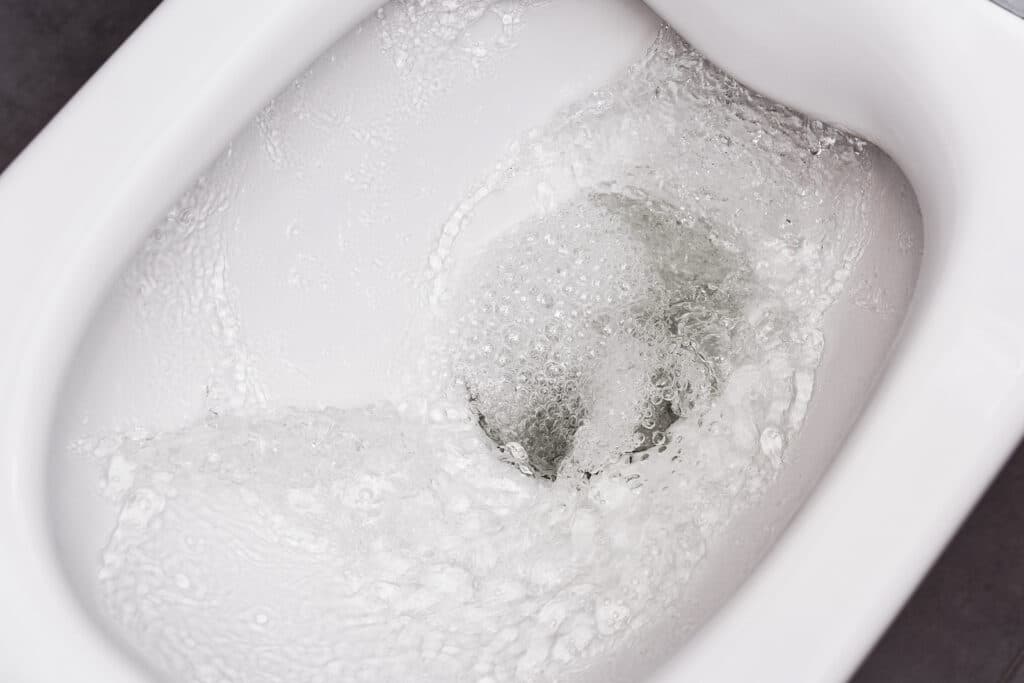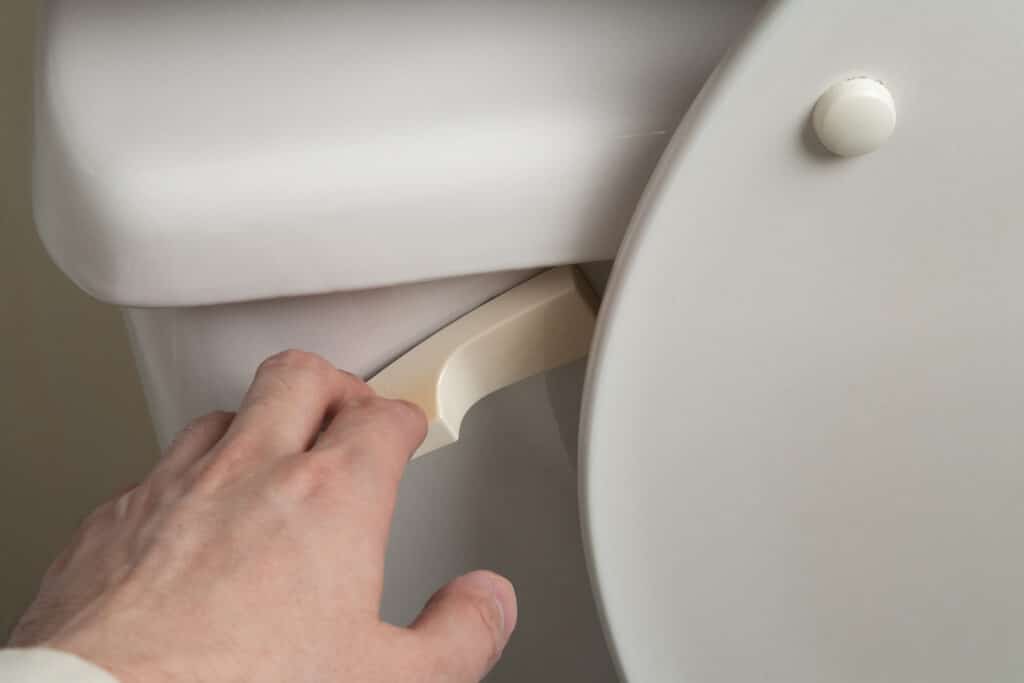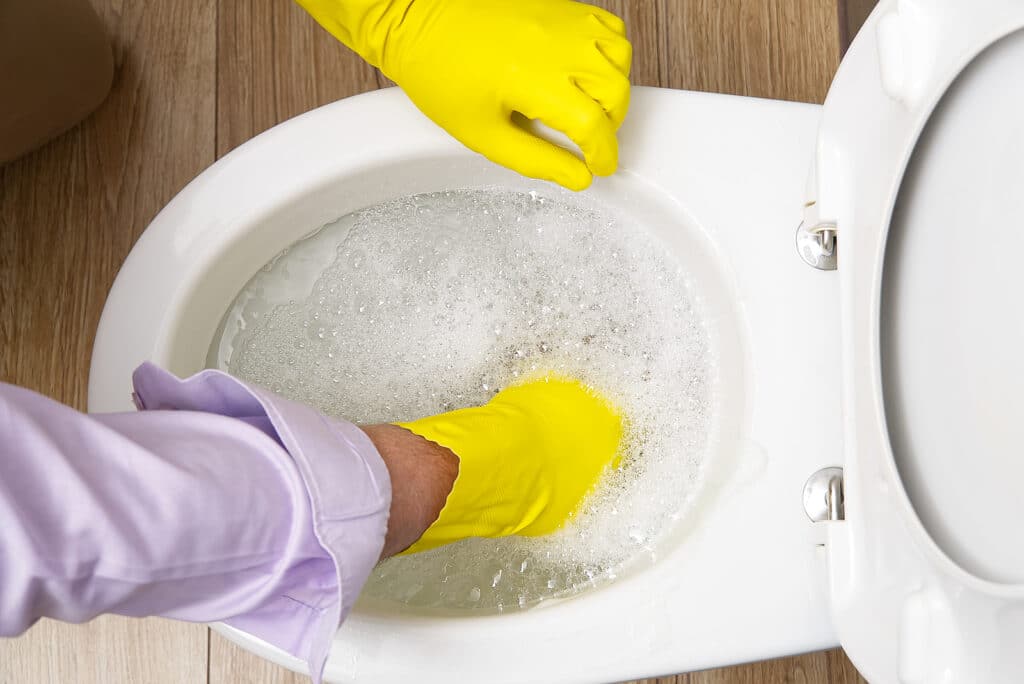Lead Pipes
Do You Have Lead Pipes in Your Home? Water mains in the UK are not…
Read more24 hr Emergency Callout

Blog

A slow draining toilet can be a very concerning sight. When your toilet is flushing incorrectly it can be easy to worry that something catastrophic has gone wrong, but often, the problem and its solution are relatively simple. A slow draining toilet is something that requires attention, but with this easy guide you should be able to find the problem with your slow draining toilet and fix it, either through unclogging or through issues in the tank.
A slow draining toilet will fill with water when flushed, before draining extremely slowly. This causes issues with regular use of the toilet, and carries the threat of flooding your bathroom floor. There are many different things that can lead to a slow draining toilet. Here are some of the most common:
There are several steps to take when fixing your slow draining toilet, whether you investigate the tank, seek to unclog the toilet with a plunger, or want to unblock your slow draining toilet without a plunger using household cleaners.
A slow draining toilet occurs in two ways, a slow filling bowl or a slow draining bowl. If your toilet bowl is slow to fill this probably means that there is a problem with your tank. If your toilet is slow to drain then that probably means there is a problem with your drains.

Most household toilets have an easy to access tank above the main unit. If your toilet tank is within the wall or other bathroom units, you may have to hire a professional to access it, but for this guide we will assume you have easy access to it.
Within your toilet tank there will be a fill valve pulling in water, connected to a float by a float arm, and a flush valve with a flapper seal connecting it to the toilet. There should be a chain connecting the flusher to the flapper seal. The chain should naturally let the flapper rest over the valve, but should be able to fully lift the flapper when the toilet is flushed. When flushed, the flapper seal should be open for two to three seconds. If the chain is not secure enough it can usually be detached and connected through a closer loop, making the connection tighter.
A buildup of minerals within the toilet tank can cause it to drain slowly. This is especially common in hard water areas. It’s recommended to clean your toilet tank twice a year, to prevent buildup. You can clean the tank with a scrubber and regular white wine vinegar, making sure to drain the water from the tank and replacing it with clean water afterwards (you can turn off the water with a water valve, usually located at the bottom of the toilet).
Adjusting the float level can help to increase flushing power. To do this with a traditional ball and arm float, you must first turn off the water and drain the toilet tank. Then, use the screw on the top of the fill valve to raise the float, making sure to only adjust in full rotations, as incomplete rotations can cause flushing issues. Some toilet tanks have fill lines marked inside them to make this process easier. When this is done, refill the tank, wait for several minutes, and flush the toilet again to see if this has fixed the slow draining issue.

If a blockage within the drains is causing your slow draining toilet, there are several options available to you. Most common is using a plunger. We recommend buying a toilet plunger with an extension flange, as these are designed for toilets specifically. Always ensure the plunger is covered with water whilst plunging. Once you have a seal, try up to twenty plunges, increasing in power if necessary. Don’t be afraid to have a few goes, waiting at least ten minutes so that water has had a chance to fill the bowl again.
If the plunger is not working for you it might be worth trying a drain snake to fix your slow draining toilet. A drain snake is a long coil that can be fed into your toilet pipes, to help remove clogs. It is more effective than a toilet brush, as it can go much further into the piping. The snake will come with a plastic coating on it’s end to protect your porcelain, so don’t use a wire coat hanger as an alternative. The snake extends with a clockwise turn of the handle on your end, reaching up to 25ft into your drain.
Once you have found a blockage, you can break it up with light force, winding and unwinding until the resistance is gone. You can remove larger objects by retracing the snake fully, though be aware that you should cover and clean the toilet area before and after this, as well as flushing the toilet with a concentrated toilet bowl cleaner afterwards.
You can also try to unclog your slow draining toilet with household cleaners. A simple idea that may help is to pour a bucket of hot water into the toilet bowl and flush it through. About four litres of hot water can loosen clogs within pipes. When using hot water, make sure not to use boiling water, which can damage porcelain. Dishwashing liquid can also be effective, and can be mixed with hot water in the toilet bowl to help break up grease.
Epsom salts mixed with warm water can also be used to break up materials within the pipes. Drain cleaning chemicals can also help fix your slow draining toilet, though you need to make sure to use a non-corrosive cleaner, and should avoid bleach, which can react with other substances in your pipes to damage your plumbing system and create fumes.
If you can’t fix your slow draining toilet through these methods, it’s time to find a professional to help you restore your toilet to working order. At Coastal Drains, we provide high quality drainage work to the south east area. Our professional staff are available on 24/7 emergency callout to help with all drainage issues, at a guaranteed low cost.
Contact us online for a free quote.